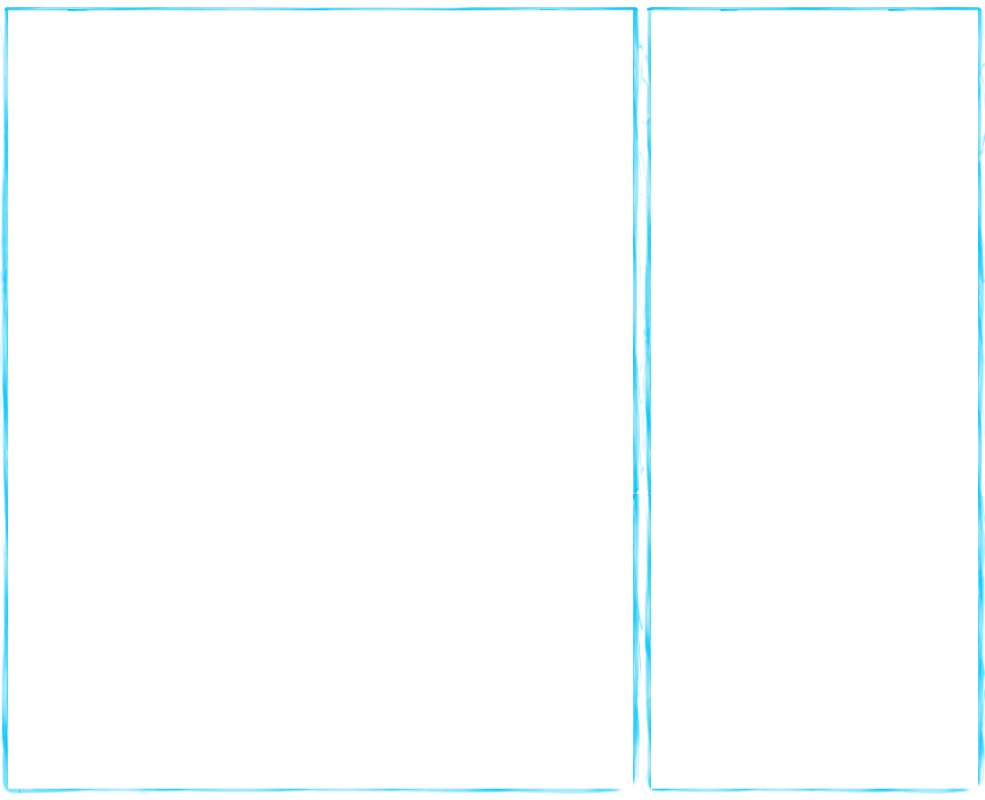

All Science Content
Similar Content
Cell Lesson
Cell Games
Animal Cell Puzzle
Plant Cell Puzzle
Plant-Animal Cell Relationship Quiz
Cells Video
Vocabulary mouseover for definition
Cell
Basic life unit. Cell Theory
The cell is the basic unit of life, all cells come from other cells. Organelle
Structures (cell organs) that help it carry out important functions. Nucleus
Controls all cell activities, contains chromosomes Nucleolus
Makes ribosomes for the cell Golgi Apparatus
Protein packaging plant for the cell; modifies some of the packages received from the RER Smooth Endoplasmic Reticulum
(SER) Makes and stores steroids; stores ions Rough Endoplasmic Reticulum
(RER) Makes proteins and send the protein packages to Golgi or cell membrane. Covered with ribosomes, making it "rough". Mitochondria
a.k.a the powerhouse; provides energy for the cell. Site of respiration. Lysosome
Digestive place for proteins, lipids, and carbohydrates Also transports undigested material to cell membrane as waste Vacuole
storage, digestion, and waste removal. Stores water Ribosome
Miniature protein factories Chromosome
Contains genetic information composed of DNA Cytoplasm
jelly-like substance that supports organelles. Cell Membrane
Controls what enters and leaves cell. Cell Wall
Provides extra support for cell Chloroplast
Contain green chlorophyll where photosynthesis takes place Photosynthesis
Process that turns radiant energy into chemical energy. Sun's energy + CO2 + Water = Sugar + O2 Respiration
Process that releases chemical energy. Sugar + O2 = Water + CO2 + released energy
Similar Content
Cell Lesson
Cell Games
Animal Cell Puzzle
Plant Cell Puzzle
Plant-Animal Cell Relationship Quiz
Cells Video
Vocabulary mouseover for definition
Cell
Basic life unit. Cell Theory
The cell is the basic unit of life, all cells come from other cells. Organelle
Structures (cell organs) that help it carry out important functions. Nucleus
Controls all cell activities, contains chromosomes Nucleolus
Makes ribosomes for the cell Golgi Apparatus
Protein packaging plant for the cell; modifies some of the packages received from the RER Smooth Endoplasmic Reticulum
(SER) Makes and stores steroids; stores ions Rough Endoplasmic Reticulum
(RER) Makes proteins and send the protein packages to Golgi or cell membrane. Covered with ribosomes, making it "rough". Mitochondria
a.k.a the powerhouse; provides energy for the cell. Site of respiration. Lysosome
Digestive place for proteins, lipids, and carbohydrates Also transports undigested material to cell membrane as waste Vacuole
storage, digestion, and waste removal. Stores water Ribosome
Miniature protein factories Chromosome
Contains genetic information composed of DNA Cytoplasm
jelly-like substance that supports organelles. Cell Membrane
Controls what enters and leaves cell. Cell Wall
Provides extra support for cell Chloroplast
Contain green chlorophyll where photosynthesis takes place Photosynthesis
Process that turns radiant energy into chemical energy. Sun's energy + CO2 + Water = Sugar + O2 Respiration
Process that releases chemical energy. Sugar + O2 = Water + CO2 + released energy
CELLS
IntroductionIn 2009, I was removing an organic covering from around a vine I had planted in the corner of my yard, when I noticed a group of small, clear, slimy looking eggs. I thought they might be slug eggs, so for confirmation I took a peek under my microscope. I could see the embryos moving around inside along with one more interesting sight: tiny worms burrowing into the eggs. After a couple of days, I could tell that they were slug eggs and the highest magnification on my microscope revealed that these slugs were already infested with now many little worms. Eventually after a few more days, my morphed slug friends were returned to the environment, complete with parasites and visible tentacles.
It is amazing at what you can see under a microscope. Depending on the magnification, even the most basic unit of life itself can be seen.
The Cell
According to the Cell Theory:
*The cell is the basic unit of life
*A cell must come from a previously existing cell
*All living organisms are made of cells.
Living organisms are either composed of one cell (unicellular) or more than one cell (multi-cellular). Each cell is made of basic parts called organelles (cell organs). Just like our bodies have tissues and organs, cells have organelles that perform functions to help the cell carry on life activities. Each structure works collectively to help the cell do a few basic things: *take in energy, *release waste, *make proteins, *metabolize energy, *grow and *reproduce.
Organelles
Plant and animal cells are extremely similar yet, remarkably different. They both contain organelles that perform similar functions. Below are a few of these organelles.
Nucleus ~ Nucleolus
The nucleus is the control center for the cell. It contains the chromosomes that have all of our unique characteristics on them. Chromosomes are made of DNA (deoxyribonucleic acid) and protein. The nucleolus is also housed in the nucleus. It is made of DNA(deoxyribonucleic acid), RNA(ribonucleic acid), and protein. The main job of the nucleolus is to make ribosomes. Once they are made, they are transported through the pores of the nuclear membrane and stick to endoplasmic reticulum, making it rough.
Cytoplasm
The cytoplasm is the jelly like stuff inside the cell, between the nucleus and the cell membrane, that helps surrounds the organelles and free ribosomes. Contains some nutrients for the cell.
Cell Membrane
The cell membrane is the structure that protects what goes in and out of the cell. It is made of a phospholipid bilayer, sort of like having 2 layers of fatty stuff surrounding the cell.
Mitochondria
Mitochondria are nicknamed the power houses because they provide energy for the cell. They use oxygen and sugars that enter through the cell's membrane to make that needed energy. They release carbon dioxide and water as waste. This is the place where cellular respiration takes place.
Endoplasmic Reticulum ~ Golgi Apparatus
Endoplasmic reticulum is a structure that is a continuation of the nuclear membrane. Close to the nucleus, the endoplasmic reticulum is covered with ribosomes. RER or rough endoplasmic reticulum synthesizes proteins for the cell. SER or smooth endoplasmic reticulum synthesizes hormones and secretory products. The Golgi Apparatus is the packaging center for the cell. This structure receives protein material from the endoplasmic reticulum, processes this protein material into a macromolecule the cell can use, then packages it for transport through out the cell.
Vacuole
Vacuoles are storage organelles in the cell. Plant cells contain one large vacuole, while animal cells contain many small ones. A plant vacuole also provides support when it is filled.
Lysosomes
Lysosomes are found in animal cells for digestion of proteins, lipids and macromolecules inside the cell.
Chloroplasts
Chloroplasts are the place where photosynthesis takes place. They contain chlorophyl that traps light energy from the sun.
Cell Wall
Cell walls are contained in plant cells and provide extra support.